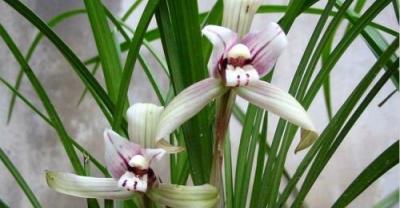Vegetable planting schedule (Collective Edition)

Types of vegetables
(1) the heat-loving type is hit without frost. Such as tomatoes, eggplant, green peppers, sweet potatoes, peanuts, soybeans, edamame beans, all kinds of beans, watermelons, pumpkins, cucumbers, gourds, balsam pears, towel gourd, muskmelon, amaranth, hollow vegetables, corn, taro, sesame, sunflowers, hollow vegetables, etc.
(2) the cold-loving type is not heat-resistant, cool weather is needed for seedlings, and frost and cold can enhance the flavor when mature. Such as Chinese cabbage, white radish, mustard, kale, cabbage, cauliflower, cauliflower, turnips, potatoes, lettuce, lettuce, carrots, celery, beet, spinach, celery, parsley, Chinese cabbage, Shanghai green, onion, onion, leek and so on.
(3) the cold-resistant type can pass the winter, such as broad bean, pea, rape, asparagus, shepherd's purse and so on.
Heat-loving vegetables: to defrost in spring, the weather becomes warmer and the temperature is stable. Heat-loving vegetables that grow slowly should be planted earlier, and some may have to grow seedlings in the greenhouse before defrosting to ensure that they mature long enough. As for fast-growing heat-loving vegetables, such as asparagus and amaranth, they can be planted from spring to late summer and early autumn.
Cold-loving vegetables can be grown in autumn and winter in areas where there is no frost; in areas with frost, they should be planted in late summer and early autumn to ensure that they mature before the frost falls. In cold areas, you can also plant in spring, but you need to raise seedlings in a greenhouse before transplanting them outdoors. Cold-loving vegetables that ripen quickly, such as cherry radish, Chinese cabbage, Shanghai green and lettuce, can be planted in spring, whether in the south or north.
Cold-tolerant vegetables are very hardy during the seedling period, but need warm weather to grow and mature. Therefore, it is generally planted some time before the first frost to make it grow seedlings for the winter. In the cold winter, the seedlings do not freeze to death, but they almost stop growing and continue to grow when the weather gets warmer at the beginning of the next spring.
Selection of planting time for vegetables
With regard to the choice of time, everyone has their own habits, some by season, some by month, below try to provide some vegetable varieties suitable for planting according to different time for friends to choose for reference.
Spring and Autumn and sowing
Vegetables suitable for spring sowing: spinach, green cabbage, amaranth (hot, preferably sown in May), lettuce, eggplant, cucumber, hollow cabbage, leek, sweet potato vine, chrysanthemum cauliflower, pepper, tomato, towel gourd, winter gourd, pumpkin, cowpea, balsam pear, watermelon, lentils, fungus, etc.
Suitable for autumn sowing vegetables (to plant some cold-resistant vegetables for the winter): spinach, cauliflower, black black mulch, garlic, parsley, moss, calf, radish, spring onions, lettuce, lettuce, celery, pea seedlings and so on.
Choose according to the season
Seasons
The main vegetables are as follows
Spring
(March to May of the Gregorian calendar)
Leek, amaranth, tomato, balsam pear, heart-saving cabbage, towel gourd, pea, string beans, houttuynia, morning pepper, eggplant, perilla, agaric, corn, purple back vegetable, eggplant, gourd
Summer
(June to August of the Gregorian calendar)
Hollow cabbage, watercress, cauliflower, rape, cucumber, wax gourd, pumpkin, watermelon, watermelon, chili, balsam pear
Autumn
(September to November of the Gregorian calendar)
Chinese cabbage, white radish, cowpea, oil bean, spinach, coriander, red cabbage moss, Chinese cabbage, celery, autumn eggplant, chrysanthemum, lettuce
Winter
(December to February of the Gregorian calendar)
Green vegetables, Chinese cabbage, spinach, lettuce, carrots, coriander, lilies, radishes, mustard
Vegetables can be grown all year round
Garlic, spring onions, Chinese cabbage, bean sprouts
Select by month
Vegetable friends in the south can order in advance, while those in the north had better postpone it by half a month to one month:
January: rape, April Man, spinach, kale, lettuce, potatoes, onions, eggplant, tomatoes (tomatoes), chili, taro, coriander.
February: April Mann, spinach, kale, lettuce, potato, onion, coriander, taro, cucumber, seasonal beans, eggplant, tomato, broccoli, pepper, taro, cabbage, radish, kale.
March: April Mann, spinach, kale, cabbage, radish, taro, cucumber, seasonal beans, eggplant, tomato, towel gourd, wax gourd, pumpkin, balsam pear, pepper, taro, spring onions, coriander, cowpea, edamarine, hollow cabbage, amaranth, kale.
April: cabbage, radish, taro, cucumber, seasonal beans, eggplant, tomato, towel gourd, winter gourd, pumpkin, balsam pear, pepper, taro, onions, coriander, cowpeas, edamame beans, cabbage, cabbage, rape, amaranth, leek, celery.
May: cabbage, radish, taro, cucumber, seasonal beans, eggplant, tomato, towel gourd, wax gourd, pumpkin, balsam pear, spring onions, coriander, cowpeas, edamame beans, hollow vegetables, rape, amaranth, cabbage, celery, leek.
June: hollow cabbage, cabbage, rape, amaranth, leek, Chinese cabbage, cucumber, cowpea, edamame bean, balsam pear, onion, radish, celery, cauliflower.
July: hollow cabbage, cabbage, rape, amaranth, leek, cabbage, cucumber, cowpea, edamame, balsam pear, spring onion, radish, cauliflower, seasonal beans, eggplant, tomato, celery.
August: hollow cabbage, cabbage, rape, amaranth, leek, Chinese cabbage, cucumber, cowpea, edamame bean, balsam pear, spring onion, radish, broccoli, green beans, celery, broccoli, peas, carrots, garlic.
September: hollow cabbage, cabbage, rape, amaranth, leek, cabbage, spinach, lettuce, onions, coriander, green vegetables, broccoli, peas, carrots, garlic, radish, cauliflower, chrysanthemum.
October: kale, rape, leek, cabbage, spinach, kale, lettuce, onions, coriander, celery, broccoli, peas, carrots, garlic, radish, cauliflower, chrysanthemum.
November: kale, rape, leek, cabbage, spinach, kale, lettuce, onions, coriander, celery, broccoli, peas, carrots, garlic, radish, cauliflower, chrysanthemum.
December: kale, rape, leek, cabbage, spinach, kale, lettuce, onions, coriander, celery, broccoli, peas, carrots, garlic, radish, cauliflower, chrysanthemum, eggplant, tomato, pepper.
Article source: agricultural assistant

- Prev

Matters needing attention in planting spring lentils
Lentils, also known as hedge beans, magpie beans, noodle beans, locally also known as eyebrow beans, knife beans, etc., eat young pods and seeds. Lentils are not only of high nutritional value, but also of invigorating the spleen and promoting dampness.
- Next

Pot planting method of balsam pear
Balsam pear is a kind of good medicine for reducing fire. Although it tastes bitter, it is loved by so many people. Many people grow balsam pear in vegetable gardens or greenhouses.
Related
- Fuxing push coffee new agricultural production and marketing class: lack of small-scale processing plants
- Jujube rice field leisure farm deep ploughing Yilan for five years to create a space for organic food and play
- Nongyu Farm-A trial of organic papaya for brave women with advanced technology
- Four points for attention in the prevention and control of diseases and insect pests of edible fungi
- How to add nutrient solution to Edible Fungi
- Is there any good way to control edible fungus mites?
- Open Inoculation Technology of Edible Fungi
- Is there any clever way to use fertilizer for edible fungus in winter?
- What agents are used to kill the pathogens of edible fungi in the mushroom shed?
- Rapid drying of Edible Fungi

